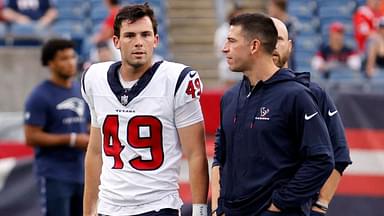The NFL today is one of America’s most entertaining and richest leagues. In just a six-month window in 2023, the NFL earned a whopping $20 billion. Logically, the league should look to expand throughout the year like its peers in the NBA, NHL or the MLB who are deemed to have a game almost every week of the year. However NFL, despite its immense economic potential has the shortest schedule of all. The reason is player welfare.
Advertisement
It’s no secret that football is one of the most dangerous contact sports in the world. In a routine player collision in the NFL, a 30-40 G’s force is recorded. To put this into context, an airforce pilot experiences a force of 10Gs while making a tight turn in his fighter jet. As evident from the example, players routinely pick up heavy knocks throughout the 16 match days.
Sustaining such high physical strain for six months is a superhuman task in itself. Extending that to a few more months for the sake of entertainment will be a grave injustice to the players. Therefore the league is a six-month affair for the safety of the players.
Thus in 1987, the NFLPA took matters into their own hands and went on strike till the league did a U-turn on their decision to extend the season. Since then, the league has been a 6-month affair starting in September and culminating with the Super Bowl in February.
Yes, the injury rates drastically reduced last season. As per NFL.com, a whopping 700 fewer injuries were recorded last season. But the injury rates dropping doesn’t necessarily mean that the game is becoming less dangerous. Hence it’s unlikely to see the game expanding anytime soon.
However, the NFL’s 6-month window has also been a boon for the growing niche of spring leagues like the UFL.
The Short NFL Window Is A Blessing For UFL And The Alternative Football Industry
For a long time, multiple business mavericks have tried entering the alternate football industry and failed. From the XFL in the early 2000s to the USFL in recent years, multiple spring leagues have come and gone. However, the recent decision to merge the USFL and the XFL to form the UFL seems to be a step in the right direction for the industry.
As mentioned by UFL CEO Russ Brandon, having “one focused league” is the best step for spring football. The merger also helps the UFL to have a competent product as it has the best minds and bodies from the XFL and the USFL.
While there is no guarantee that the United Football League will succeed despite things looking good on paper, the main focus here should be that a league like the UFL is getting a space in American football. Almost every other sporting league in the country is a monopoly except the NFL. So the six-month window fosters healthy competition, an alternative in a true sense for the viewers and an opportunity for the players who miss out on the NFL to still make a living playing football.
All said the NFL’s decision to stick to a 6-month window is commendable for the various reasons above. Moreover, a part of the NFL’s exorbitant money-making ability is also its exclusivity factor that year-long leagues don’t offer. Overall, the league should continue this way.







